Brealey, Myers. Principles of Corporate Finance. 7th edition
Подождите немного. Документ загружается.

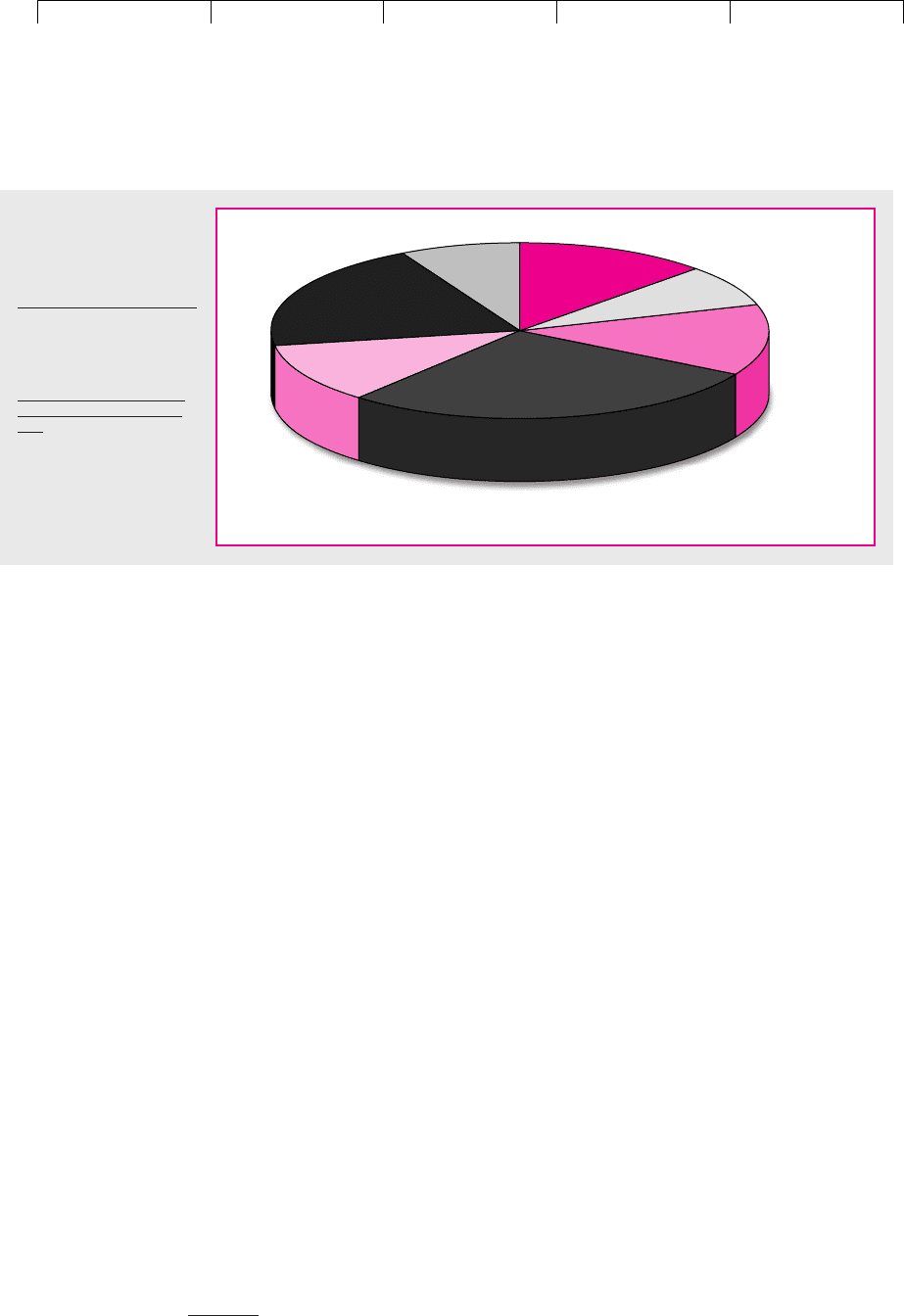
Brealey−Meyers:
Principles of Corporate
Finance, Seventh Edition
IV. Financial Decisions and
Market Efficiency
14. An Overview of
Corporate Financing
© The McGraw−Hill
Companies, 2003
Because lenders are not regarded as owners of the firm, they do not normally
have any voting power. The company’s payments of interest are regarded as a
cost and are deducted from taxable income. Thus interest is paid from before-tax
income, whereas dividends on common and preferred stock are paid from after-
tax income. Therefore the government provides a tax subsidy on the use of debt
which it does not provide on equity. We will discuss debt and taxes in detail in
Chapter 18.
We have seen that financial institutions own the majority of corporate equity.
Figure 14.3 shows that this is also true of the company’s bonds. In this case it is the
insurance companies that own the largest stake.
18
Debt Comes in Many Forms
The financial manager is faced with an almost bewildering choice of debt securi-
ties. For example, look at Table 14.5, which shows the many ways that H.J. Heinz
has borrowed money. Heinz has also entered into a number of other arrangements
that are not shown on the balance sheet. For example, it has arranged lines of credit
that allow it to take out further short-term bank loans. Also it has entered into a
swap that converts its fixed-rate sterling notes into floating-rate debt.
You are probably wondering what a swap or floating-rate debt is. Relax—later
in the book we will spend several chapters explaining the various features of cor-
porate debt. For the moment, simply notice that the mixture of loans that each com-
pany issues reflects the financial manager’s response to a number of questions:
1. Should the company borrow short-term or long-term? If your company
simply needs to finance a temporary increase in inventories ahead of the
Christmas season, then it may make sense to take out a short-term bank
loan. But suppose that the cash is needed to pay for expansion of an oil
refinery. Refinery facilities can operate more or less continuously for
390 PART IV
Financing Decisions and Market Efficiency
18
Figure 14.3 does not include shorter-term debt such as bank loans. Almost all short-term debt issued
by corporations is held by financial institutions.
Other
Households
Rest of
world
Mutual
funds, etc.
Insurance
companies
Pension
funds
Banks & savings
institutions
FIGURE 14.3
Holdings of corporate
and foreign bonds,
end 2000.
Source: Board of Governors
of the Federal Reserve
System, Division of Research
and Statistics, Flow of Funds
Accounts Table L.212 at
www.federalreserve.gov/
releases/z1/current/data.
htm.

Brealey−Meyers:
Principles of Corporate
Finance, Seventh Edition
IV. Financial Decisions and
Market Efficiency
14. An Overview of
Corporate Financing
© The McGraw−Hill
Companies, 2003
15 or 20 years. In that case it would be more appropriate to issue a long-
term bond.
19
Some loans are repaid in a steady regular way; in other cases the entire
loan is repaid at maturity. Occasionally either the borrower or the lender
has the option to terminate the loan early and to demand that it be repaid
immediately.
2. Should the debt be fixed or floating rate? The interest payment, or coupon, on
long-term bonds is commonly fixed at the time of issue. If a $1,000 bond is
issued when long-term interest rates are 10 percent, the firm continues to
pay $100 per year regardless of how interest rates fluctuate.
Most bank loans and some bonds offer a variable, or floating, rate. For
example, the interest rate in each period may be set at 1 percent above
LIBOR (London Interbank Offered Rate), which is the interest rate at which
major international banks lend dollars to each other. When LIBOR changes,
the interest rate on your loan also changes.
3. Should you borrow dollars or some other currency? Many firms in the United
States borrow abroad. Often they may borrow dollars abroad (foreign
investors have large holdings of dollars), but firms with large overseas
operations may decide to issue debt in a foreign currency. After all, if you
need to spend foreign currency, it probably makes sense to borrow foreign
currency.
Because these international bonds have usually been marketed
by the London branches of international banks they have traditionally
been known as eurobonds and the debt is called eurocurrency debt.
A eurobond may be denominated in dollars, yen, or any other
currency. Unfortunately, when the single European currency was
established, it was called the euro. It is, therefore, easy to confuse
a eurobond (a bond that is sold internationally) with a bond that is
denominated in euros. (Notice that Heinz has issued both eurodollar
debt and euro debt.)
4. What promises should you make to the lender? Lenders want to make sure that
their debt is as safe as possible. Therefore, they may demand that their debt
is senior to other debt. If default occurs, senior debt is first in line to be
repaid. The junior, or subordinated, debtholders are paid only after all senior
CHAPTER 14
An Overview of Corporate Financing 391
US Dollar Debt Foreign Currency Debt
Bank loans Sterling notes
Commercial paper Euro notes
Senior unsecured notes and debentures Lire notes
Eurodollar notes Australian dollar notes
Revenue bonds
TABLE 14.5
Large firms issue many different
securities. This table shows some of the
debt securities on Heinz’s balance sheet
in May 2000.
19
A company might choose to finance a long-term project with short-term debt if it wished to signal its
confidence in the future. Investors would deduce that, if the company anticipated declining profits, it
would not take the risk of being unable to take out a fresh loan when the first one matured. See D. Di-
amond, “Debt Maturity Structure and Liquidity Risk,” Quarterly Journal of Economics 106 (1991),
pp. 709–737.

Brealey−Meyers:
Principles of Corporate
Finance, Seventh Edition
IV. Financial Decisions and
Market Efficiency
14. An Overview of
Corporate Financing
© The McGraw−Hill
Companies, 2003
debtholders are satisfied (though all debtholders rank ahead of the
preferred and common stockholders).
The firm may also set aside some of its assets specifically for the
protection of particular creditors. Such debt is said to be secured and the
assets that are set aside are know as collateral. Thus a retailer might offer
inventory or accounts receivable as collateral for a bank loan. If the retailer
defaults on the loan, the bank can seize the collateral and use it to help pay
off the debt.
Usually the firm also provides assurances to the lender that it will use
the money well and not take unreasonable risks. For example, a firm that
borrows in moderation is less likely to get into difficulties than one that is
up to its gunwales in debt. So the borrower may agree to limit the amount
of extra debt that it can issue. Lenders are also concerned that, if trouble
occurs, others will push ahead of them in the queue. Therefore, the firm
may agree not to create new debt that is senior to existing debtholders or to
put aside assets for other lenders.
5. Should you issue straight or convertible bonds? Companies often issue securities
that give the owner an option to convert them into other securities. These
options may have a substantial effect on value. The most dramatic example is
provided by a warrant, which is nothing but an option. The owner of a warrant
can purchase a set number of the company’s shares at a set price before a set
date. Warrants and bonds are often sold together as a package.
A convertible bond gives its owner the option to exchange the bond for
a predetermined number of shares. The convertible bondholder hopes that
the issuing company’s share price will zoom up so that the bond can be
converted at a big profit. But if the shares zoom down, there is no obligation
to convert; the bondholder remains a bondholder.
20
Variety’s the Very Spice of Life
We have indicated several dimensions along which corporate securities can be
classified. That gives the financial manager plenty of choice in designing securi-
ties. As long as you can convince investors of its attractions, you can issue a con-
vertible, subordinated, floating-rate bond denominated in Swedish kronor.
Rather than combining features of existing securities, you may create an entirely
new one. We can imagine a coal mining company issuing convertible bonds on
which the payment fluctuates with coal prices. We know of no such security, but
it is perfectly legal to issue it—and who knows?—it might generate considerable
interest among investors.
392 PART IV
Financing Decisions and Market Efficiency
20
Companies may also issue convertible preferred stock. The Heinz preferred stock that we mentioned
earlier is convertible.
14.4 FINANCIAL MARKETS AND INSTITUTIONS
That completes our tour of corporate securities. You may feel like the tourist who
has just seen 12 cathedrals in five days. But there will be plenty of time in later
chapters for reflection and analysis. It is now time to move on and to look briefly

Brealey−Meyers:
Principles of Corporate
Finance, Seventh Edition
IV. Financial Decisions and
Market Efficiency
14. An Overview of
Corporate Financing
© The McGraw−Hill
Companies, 2003
at the markets in which the firm’s securities are traded and at the financial institu-
tions that hold them.
We have explained that corporations raise money by selling financial assets such
as stocks and bonds. This increases the amount of cash held by the company and
the amount of stocks and bonds held by the public. Such an issue of securities is
known as a primary issue and it is sold in the primary market. But in addition to
helping companies to raise cash, financial markets also allow investors to trade
stocks or bonds between themselves. For example, Ms. Watanabe might decide to
raise some cash by selling her Sony stock at the same time that Mr. Hashimoto in-
vests his savings in Sony. So they make a trade. The result is simply a transfer of
ownership from one person to another, which has no effect on the company’s cash,
assets, or operations. Such purchases and sales are known as secondary transactions
and they take place in the secondary market.
Some financial assets have less active secondary markets than others. For ex-
ample, when a company borrows money from the bank, the bank acquires a fi-
nancial asset (the company’s promise to repay the loan with interest). Banks do
sometimes sell packages of loans to other banks, but usually they retain the loan
until it is repaid by the borrower. Other financial assets are regularly traded and
their prices are shown each day in the newspaper. Some, such as shares of stock,
are traded on organized exchanges like the New York, London, or Tokyo stock ex-
changes. In other cases there is no organized exchange and the financial assets are
traded by a network of dealers. For example, if General Motors needs to buy for-
eign currency for an overseas investment, it will do so from one of the major banks
that deals regularly in currency. Markets where there is no organized exchange are
known as over-the-counter (OTC) markets.
Financial Institutions
We have referred to the fact that a large proportion of the company’s equity and
debt is owned by financial institutions. Since we will be meeting some of these fi-
nancial institutions in the following chapters, we should introduce them to you
here and explain what functions they serve.
Financial institutions act as financial intermediaries that gather the savings of
many individuals and reinvest them in the financial markets. For example, banks
raise money by taking deposits and by selling debt and common stock to in-
vestors. They then lend the money to companies and individuals. Of course
banks must charge sufficient interest to cover their costs and to compensate de-
positors and other investors.
Banks and their immediate relatives, such as savings and loan companies, are
the most familiar intermediaries. But there are many others, such as insurance
companies and mutual funds. In the United States insurance companies are more
important than banks for the long-term financing of business. They are massive
investors in corporate stocks and bonds, and they often make long-term loans di-
rectly to corporations. Most of the money for these loans comes from the sale of
insurance policies. Say you buy a fire insurance policy on your home. You pay
cash to the insurance company, which it invests in the financial markets. In ex-
change you get a financial asset (the insurance policy). You receive no interest on
this asset, but if a fire does strike, the company is obliged to cover the damages
up to the policy limit. This is the return on your investment. Of course, the com-
pany will issue not just one policy but thousands. Normally the incidence of fires
CHAPTER 14
An Overview of Corporate Financing 393

Brealey−Meyers:
Principles of Corporate
Finance, Seventh Edition
IV. Financial Decisions and
Market Efficiency
14. An Overview of
Corporate Financing
© The McGraw−Hill
Companies, 2003
averages out, leaving the company with a predictable obligation to its policy-
holders as a group.
Why are financial intermediaries different from a manufacturing corpora-
tion? First, the financial intermediary may raise money in special ways, for ex-
ample, by taking deposits or by selling insurance policies. Second, the financial
intermediary invests in financial assets, such as stocks, bonds, or loans to busi-
nesses or individuals. By contrast, the manufacturing company’s main invest-
ments are in real assets, such as plant and equipment. Thus the intermediary re-
ceives cash flows from its investment in one set of financial assets (stocks,
bonds, etc.) and repackages those flows as a different set of financial assets
(bank deposits, insurance policies, etc.). The intermediary hopes that investors
will find the cash flows on this new package more attractive than those provided
by the original security.
Financial intermediaries contribute in many ways to our individual well-being
and the smooth functioning of the economy. Here are some examples.
The Payment Mechanism Think how inconvenient life would be if all payments
had to be made in cash. Fortunately, checking accounts, credit cards, and electronic
transfers allow individuals and firms to send and receive payments quickly and
safely over long distances. Banks are the obvious providers of payments services,
but they are not alone. For example, if you buy shares in a money-market mutual
fund, your money is pooled with that of other investors and is used to buy safe,
short-term securities. You can then write checks on this mutual fund investment,
just as if you had a bank deposit.
Borrowing and Lending Almost all financial institutions are involved in channel-
ing savings toward those who can best use them. Thus, if Ms. Jones has more
money now than she needs and wishes to save for a rainy day, she can put the
money in a bank savings deposit. If Mr. Smith wants to buy a car now and pay for
it later, he can borrow money from the bank. Both the lender and borrower are hap-
pier than if they were forced to spend cash as it arrived. Of course, individuals are
not alone in needing to raise cash. Companies with profitable investment oppor-
tunities may also wish to borrow from the bank, or they may raise the finance by
selling new shares or bonds. Governments also often run at a deficit, which they
fund by issuing large quantities of debt.
In principle, individuals or firms with cash surpluses could take out newspa-
per advertisements or surf the Net looking for those with cash shortages. But it
can be cheaper and more convenient to use a financial intermediary, such as a
bank, to link up the borrower and lender. For example, banks are equipped to
check out the would-be borrower’s creditworthiness and to monitor the use of
cash lent out. Would you lend money to a stranger contacted over the Internet?
You would be safer lending the money to the bank and letting the bank decide
what to do with it.
Notice that banks promise their checking account customers instant access to
their money and at the same time make long-term loans to companies and indi-
viduals. Since there is no marketplace in which bank loans are regularly bought
and sold, most of the loans that banks make are illiquid. This mismatch between
the liquidity of the bank’s liabilities (the deposits) and most of its assets (the
loans) is possible only because the number of depositors is sufficiently large so
394 PART IV
Financing Decisions and Market Efficiency
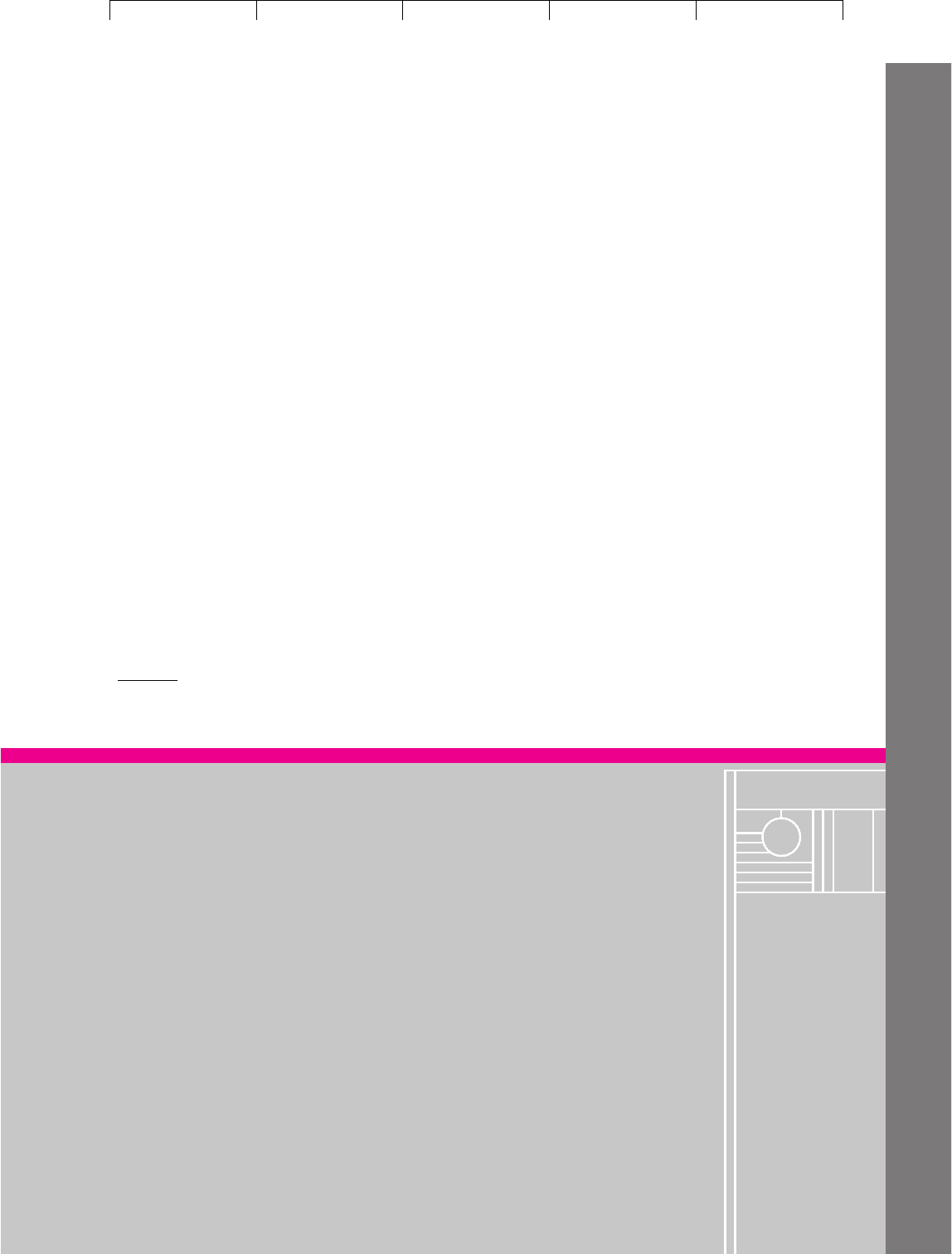
Brealey−Meyers:
Principles of Corporate
Finance, Seventh Edition
IV. Financial Decisions and
Market Efficiency
14. An Overview of
Corporate Financing
© The McGraw−Hill
Companies, 2003
CHAPTER 14 An Overview of Corporate Financing 395
banks can be fairly sure that they won’t all want to withdraw their money si-
multaneously.
Pooling Risk Financial markets and institutions allow firms and individuals to
pool their risks. For instance, insurance companies make it possible to share the
risk of an automobile accident or a household fire. Here is another example. Sup-
pose that you have only a small sum to invest. You could buy the stock of a single
company, but then you would be wiped out if that company went belly-up. It’s
generally better to buy shares in a mutual fund that invests in a diversified portfo-
lio of common stocks or other securities. In this case you are exposed only to the
risk that security prices as a whole will fall.
The basic functions of financial markets are the same the world over. So it is not
surprising that similar institutions have emerged to perform these functions. In al-
most every country you will find banks accepting deposits, making loans, and
looking after the payments system. You will also encounter insurance companies
offering life insurance and protection against accident. If the country is relatively
prosperous, other institutions, such as pension funds and mutual funds, will also
have been established to help manage people’s savings.
Of course there are differences in institutional structure. Take banks, for exam-
ple. In many countries where securities markets are relatively undeveloped, banks
play a much more dominant role in financing industry. Often the banks undertake
a wider range of activities than they do in the United States. For example, they may
take large equity stakes in industrial companies; this would not generally be al-
lowed in the United States.
21
21
U.S. banks are permitted to acquire temporary equity holdings as a result of company bankruptcy.
SUMMARY
Visit us at www.mhhe.com/bm7e
Financial managers are faced with two broad financing decisions:
1. What proportion of profits should the corporation reinvest in the business
rather than distribute as dividends to its shareholders?
2. What proportion of the deficit should be financed by borrowing rather than by
an issue of equity?
The answer to the first question reflects the firm’s dividend policy and the answer
to the second depends on its debt policy.
Table 14.1 summarized the ways that companies raise and spend money. Have
another look at it and try to get a feel for the numbers. Notice that
1. Internally generated cash is the principal source of funds. Some people worry
about this; they think that if management does not have to go to the trouble of
raising the money, it won’t think so hard when it comes to spending it.
2. The mix of financing changes from year to year. Sometimes companies prefer
to issue equity and pay back part of their debt. At other times, they raise more
debt than they need for investment and they use the balance to repurchase
equity.
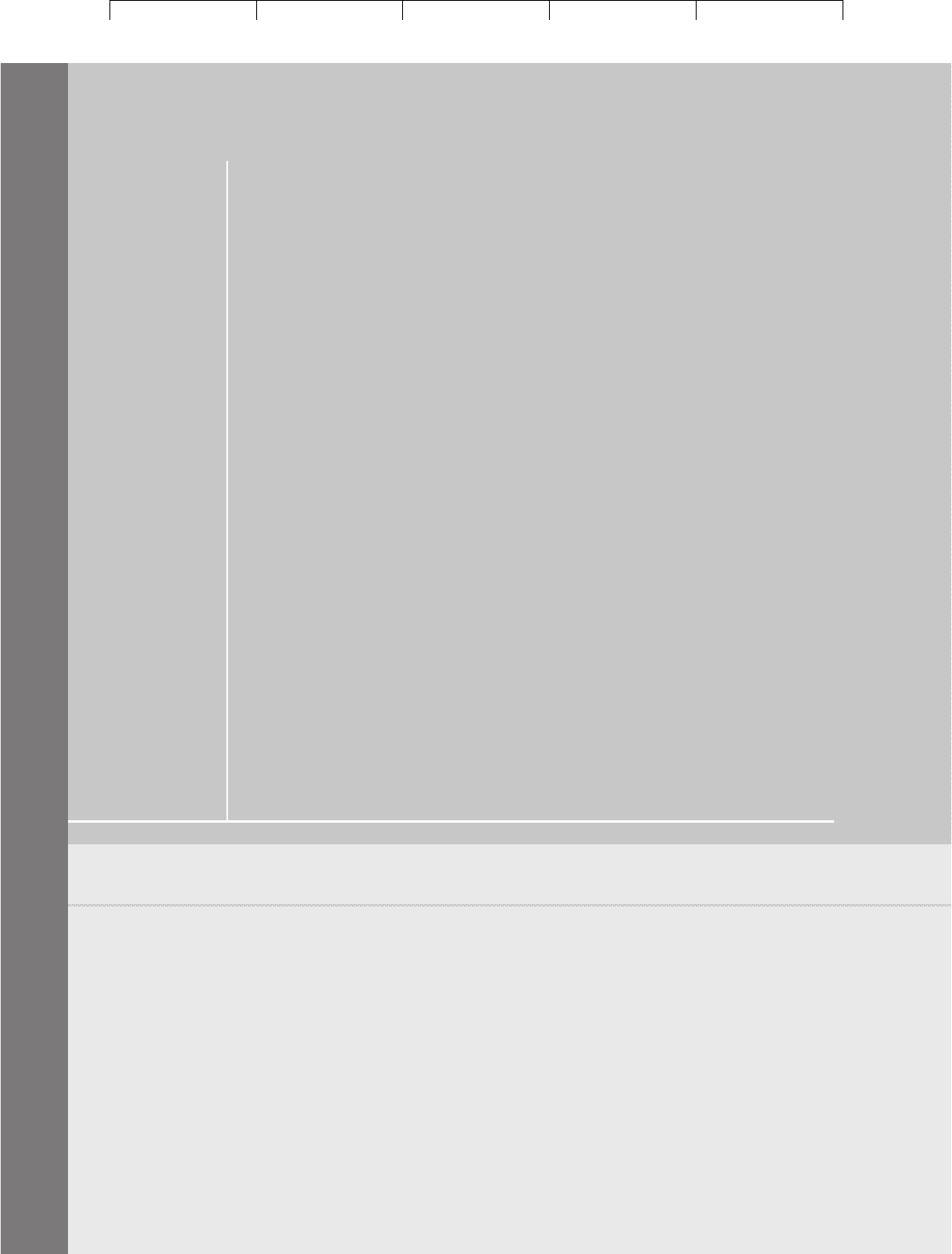
Brealey−Meyers:
Principles of Corporate
Finance, Seventh Edition
IV. Financial Decisions and
Market Efficiency
14. An Overview of
Corporate Financing
© The McGraw−Hill
Companies, 2003
396 PART IV Financing Decisions and Market Efficiency
Common stock is the simplest form of finance. The common stockholders own the
corporation. They are therefore entitled to whatever earnings are left over after all
the firm’s debts are paid. Stockholders also have the ultimate control over how the
firm’s assets are used. They exercise this control by voting on important matters,
such as membership of the board of directors.
The second source of finance is preferred stock. Preferred is like debt in that it
promises a fixed dividend, but preferred dividends are within the discretion of
the board of directors. The firm must pay any dividends on the preferred before
it is allowed to pay a dividend on the common stock. Lawyers and tax experts
treat preferred stock as part of the company’s equity. This means that preferred
dividends are not tax-deductible. That is one reason that preferred is less popu-
lar than debt.
The third important source of finance is debt. Debtholders are entitled to a reg-
ular payment of interest and the final repayment of principal. If the company can-
not make these payments, it can file for bankruptcy. The usual result is that the
debtholders then take over and either sell the company’s assets or continue to op-
erate them under new management.
Note that the tax authorities treat interest payments as a cost and therefore the
company can deduct interest when calculating its taxable income. Interest is paid
from pretax income, whereas dividends and retained earnings come from after-tax
income.
Debt ratios in the United States have generally increased over the post–World
War II period. However, they are not appreciably higher than the ratios in the other
major industrialized countries.
The variety of debt instruments is almost endless. The instruments differ by ma-
turity, interest rate (fixed or floating), currency, seniority, security, and whether the
debt can be converted into equity.
The majority of the firm’s debt and equity is owned by financial institutions—
notably banks, insurance companies, pension funds, and mutual funds. These in-
stitutions provide a variety of services. They run the payment system, channel sav-
ings to those who can best use them, and help firms to manage their risk. These
basic functions do not change but the ways that financial markets and institutions
perform these functions is constantly changing.
FURTHER
READING
A useful article for comparing financial structure in the United States and other major industrial
countries is:
R. G. Rajan and L. Zingales: “What Do We Know about Capital Structure? Some Evidence
from International Data,” Journal of Finance, 50:1421–1460 (December 1995).
For a discussion of the allocation of control rights and cash-flow rights between stockholders and
debtholders, see:
O. Hart: Firms, Contracts, and Financial Structure, Clarendon Press, Oxford, 1995.
Robert Merton gives an excellent overview of the functions of financial institutions in:
R. Merton: “A Functional Perspective of Financial Intermediation,” Financial Management,
24: 23–41 (Summer 1995).
Visit us at www.mhhe.com/bm7e
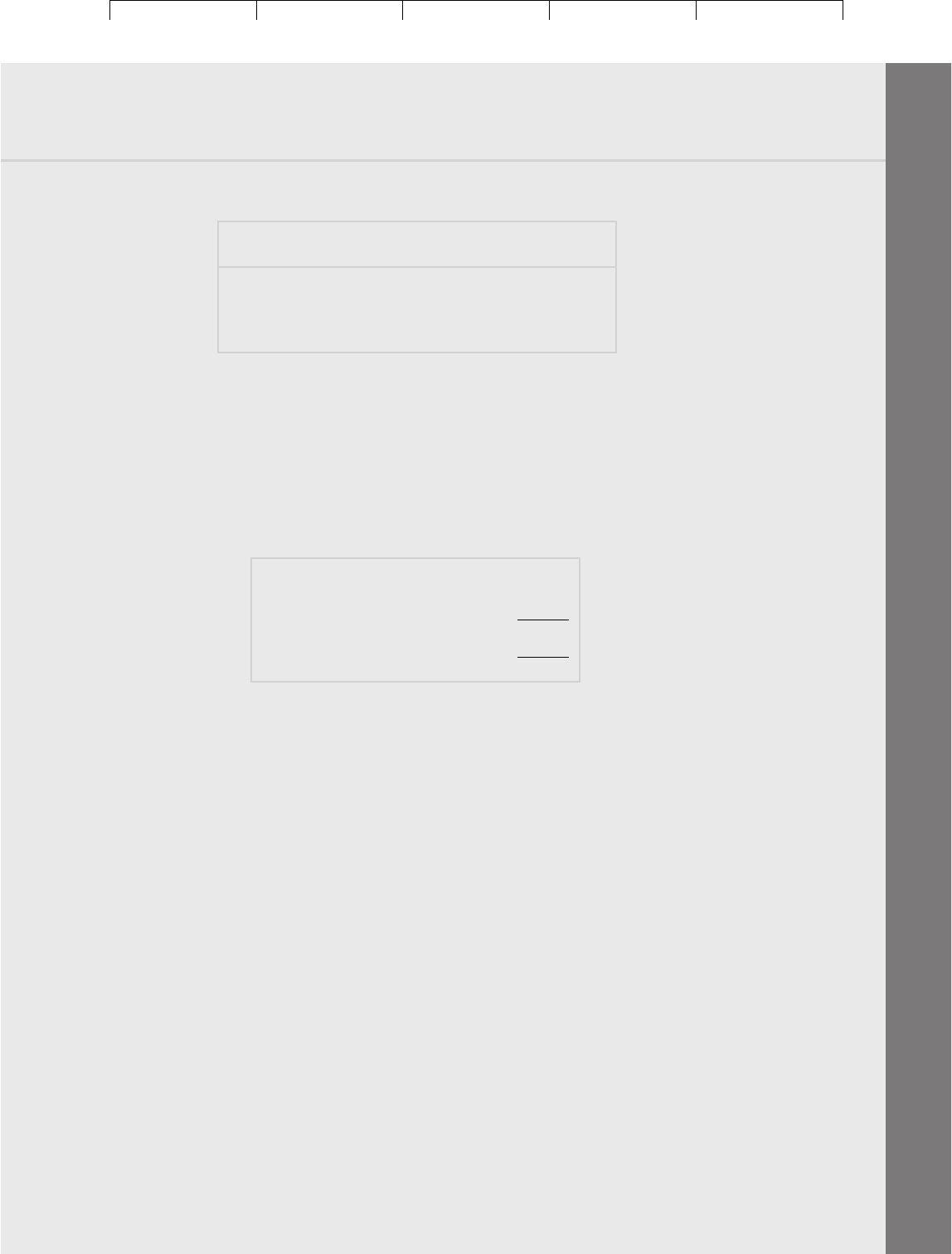
Brealey−Meyers:
Principles of Corporate
Finance, Seventh Edition
IV. Financial Decisions and
Market Efficiency
14. An Overview of
Corporate Financing
© The McGraw−Hill
Companies, 2003
CHAPTER 14 An Overview of Corporate Financing 397
QUIZ
1. The figures in the following table are in the wrong order. Can you place them in their
correct order?
Visit us at www.mhhe.com/bm7e
Percent of Total Sources,
2000
Internally generated cash 23
Financial deficit ⫺14
Net share issues 77
Debt issues 38
2. True or false?
a. Net stock issues by U.S. nonfinancial corporations are in most years small but
positive.
b. Most capital investment by U.S. companies is funded by retained earnings and
reinvested depreciation.
c. Debt ratios in the U.S. have generally increased over the past 40 years.
d. Debt ratios in the U.S. are lower than in other industrial countries.
3. The authorized share capital of the Alfred Cake Company is 100,000 shares. The equity
is currently shown in the company’s books as follows:
Common stock ($.50 par value) $40,000
Additional paid-in capital 10,000
Retained earnings 30,000
Common equity 80,000
Treasury stock (2,000 shares) 5,000
Net common equity $75,000
a. How many shares are issued?
b. How many are outstanding?
c. Explain the difference between your answers to (a) and (b).
d. How many more shares can be issued without the approval of shareholders?
e. Suppose that Alfred Cake issues 10,000 shares at $2 a share. Which of the above
figures would be changed?
f. Suppose instead that the company bought back 5,000 shares at $5 a share. Which of
the above figures would be changed?
4. There are 10 directors to be elected. A shareholder owns 80 shares. What is the maxi-
mum number of votes that he or she can cast for a favorite candidate under (a) major-
ity voting? (b) cumulative voting?
5. In what ways is preferred stock like debt? In what ways is it like common stock?
6. Fill in the blanks, using the following terms: floating rate, common stock, convertible,
subordinated, preferred stock, senior, warrant.
a. If a lender ranks behind the firm’s general creditors in the event of default, his or
her loan is said to be __________.
b. Interest on many bank loans is based on a __________ of interest.
c. A(n) __________ bond can be exchanged for shares of the issuing corporation.
d. A(n) __________ gives its owner the right to buy shares in the issuing company at a
predetermined price.
e. Dividends on __________ cannot be paid unless the firm has also paid any
dividends on its __________.
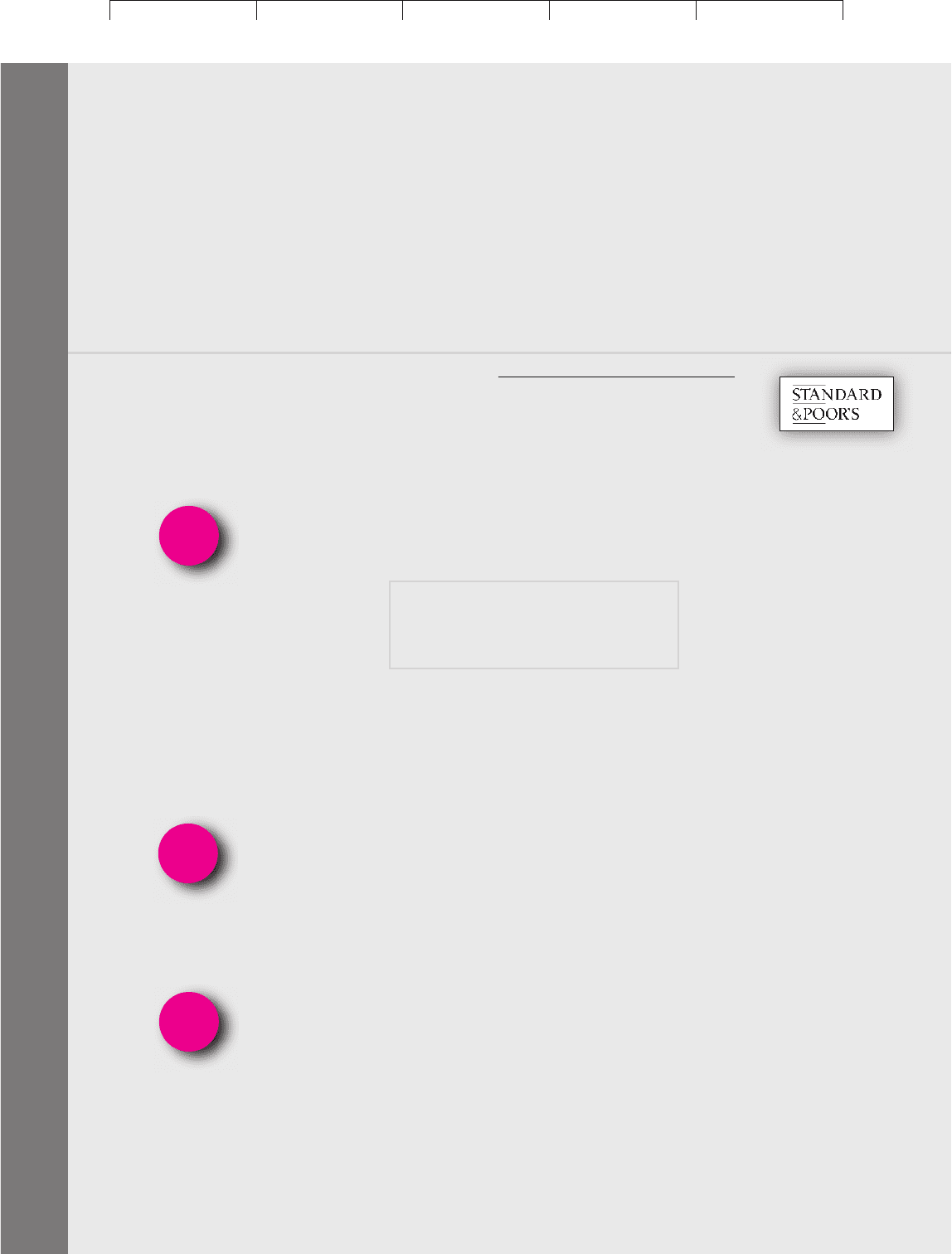
Brealey−Meyers:
Principles of Corporate
Finance, Seventh Edition
IV. Financial Decisions and
Market Efficiency
14. An Overview of
Corporate Financing
© The McGraw−Hill
Companies, 2003
398 PART IV Financing Decisions and Market Efficiency
7. True or false?
a. In the United States, most common shares are owned by individual investors.
b. An insurance company is a financial intermediary.
c. Investments in partnerships cannot be publicly traded.
8. What is the traditional meaning of the term eurobond?
9. How do financial intermediaries contribute to the smooth functioning of the economy?
Give three examples.
PRACTICE
QUESTIONS
1. Use the Market Insight database (www
.mhhe.com/edumarketinsight
)
to work out the financing proportions given in Table 14.1 for a particular
industrial company for some recent year.
2. In Table 14.3 Rajan and Zingales use both book and market values of equity
to measure debt ratios. Which measure results in the lower ratio? Why?
3. It is sometimes suggested that since retained earnings provide the bulk of industry’s
capital needs, the securities markets are largely redundant. Do you agree?
4. In 1999 Pfizer had 9,000 million shares of common stock authorized, 4,260 million in is-
sue, and 3,847 million outstanding (figures rounded to the nearest million). Its equity
account was as follows:
Visit us at www.mhhe.com/bm7e
Common stock $ 213
Additional paid-in capital 5,416
Retained earnings 10,109
Treasury shares 6,851
Currency translation adjustment and contributions to an employee benefit trust have
been deducted from retained earnings.
a. What is the par value of each share?
b. What was the average price at which shares were sold?
c. How many shares have been repurchased?
d. What was the average price at which the shares were repurchased?
e. What is the value of the net common equity?
5. Inbox Software was founded in 1998. Its founder put up $2 million for 500,000 shares of
common stock. Each share had a par value of $.10.
a. Construct an equity account (like the one in Table 14.4) for Inbox on the day after
its founding. Ignore any legal or administrative costs of setting up the company.
b. After two years of operation, Inbox generated earnings of $120,000 and paid no
dividends. What was the equity account at this point?
c. After three years the company sold one million additional shares for $5 per share.
It earned $250,000 during the year and paid no dividends. What was the equity
account?
6. Look back at Table 14.4.
a. Suppose that Heinz issued an additional 50 million shares at $30 a share. Rework
Table 14.4 to show the company’s equity after the issue.
b. Suppose that Heinz subsequently repurchased 20 million shares at $35 a share.
Rework Table 14.4 to show the effect of this further change.
7. Suppose that East Corporation has issued voting and nonvoting stock. Investors hope that
holders of the voting stock will use their power to vote out the company’s incompetent
management. Would you expect the voting stock to sell for a higher price? Explain.
EXCEL
EXCEL
EXCEL

Brealey−Meyers:
Principles of Corporate
Finance, Seventh Edition
IV. Financial Decisions and
Market Efficiency
14. An Overview of
Corporate Financing
© The McGraw−Hill
Companies, 2003
CHAPTER 14 An Overview of Corporate Financing 399
8. In 2001 Beta Corporation earned gross profits of $760,000.
a. Suppose that it is financed by a combination of common stock and $1 million of
debt. The interest rate on the debt is 10 percent, and the corporate tax rate is 35
percent. How much profit is available for common stockholders after payment of
interest and corporate taxes?
b. Now suppose instead that Beta is financed by a combination of common stock and
$1 million of preferred stock. The dividend yield on the preferred is 8 percent and
the corporate tax rate is still 35 percent. How much profit is now available for
common stockholders after payment of preferred dividends and corporate taxes?
9. Look up the financial statements for a U.S. corporation on the Internet and construct a
table like Table 14.5 showing the types of debt that the company has issued. What
arrangements has it made that would allow it to borrow more in the future? (You will
need to look at the notes to the accounts to answer this.)
10. Which of the following features would increase the value of a corporate bond? Which
would reduce its value?
a. The borrower has the option to repay the loan before maturity.
b. The bond is convertible into shares.
c. The bond is secured by a mortgage on real estate.
d. The bond is subordinated.
CHALLENGE
QUESTIONS
1. The shareholders of the Pickwick Paper Company need to elect five directors. There are
200,000 shares outstanding. How many shares do you need to own to ensure that you
can elect at least one director if (a) the company has majority voting? (b) it has cumu-
lative voting?
2. Can you think of any new kinds of security that might appeal to investors? Why do you
think they have not been issued?
Visit us at www.mhhe.com/bm7e
